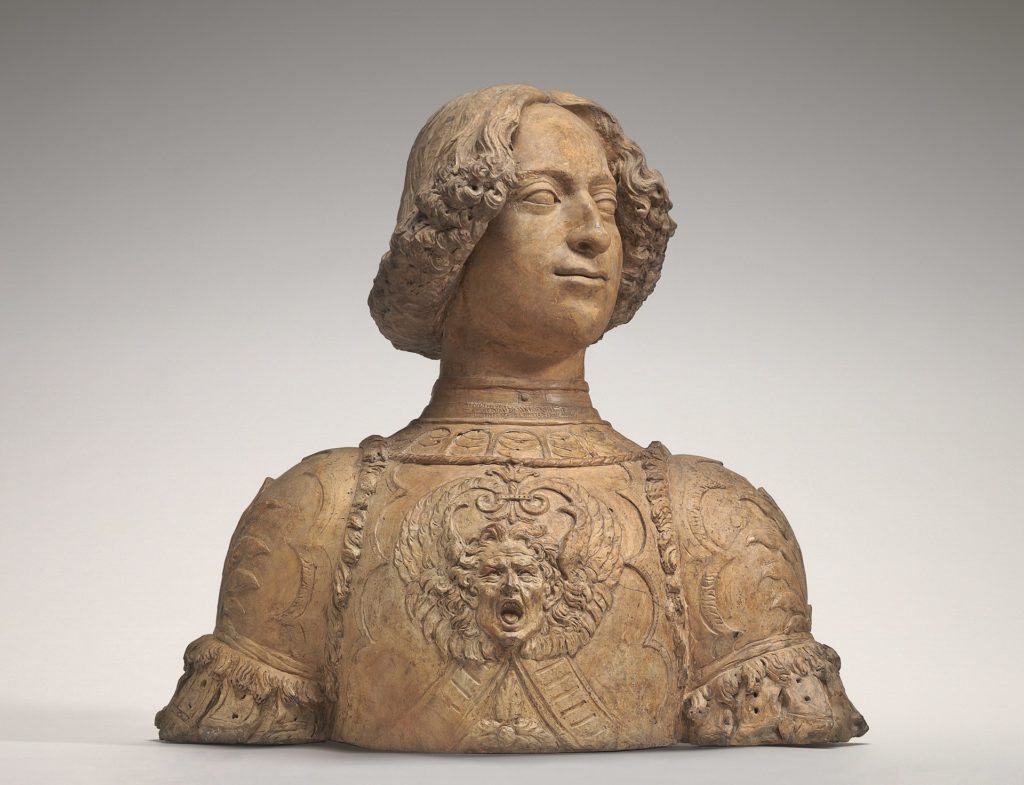
By Andrea M. Gáldy –
The art world likes to regard Leonardo as someone born a genius with pen and brush in his hands and plans for superlative works of art already forming in his brain. Nonetheless, Leonardo like everyone else had to learn his trade. He was apprenticed to a master able to teach him the foundations of his profession. Talent and study together gave Leonardo a head start, although his search for new techniques often proved to be deleterious to his works of art.
Leonardo’s master was Andrea del Verrocchio and thus an artist important in more ways than just as the teacher of a genius. Verrocchio as well as Desiderio da Settignano were skilful sculptors in marble and bronze working for the leading families in Florence, for example they executed commissions for the Medici palace and at the Basilica of San Lorenzo (see the above lead sculpted image of Verrocchio’s Giulano de’ Medici, 1475-8). Female portraits demurely clutching bunches of flowers as well as heroes of antiquity in a relief setting somewhat reminiscent of ancient medals proved successful with collectors at a time when collectors started to amass large numbers of antiquities for their study rooms. The theme of youthful vs mature warriors, for example Alexander vs. Darius, formed the extremes of an artistic dialogue even when only part of the counter-figure was present as in the case of Verocchio’s statue of the young David (below).
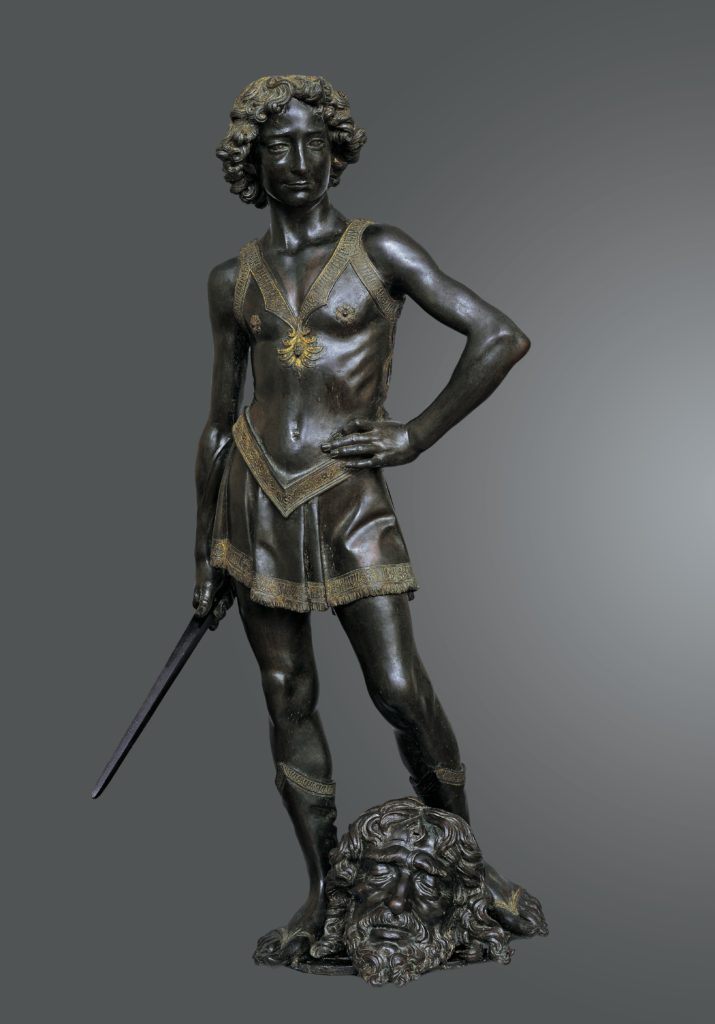
Even though Desiderio and Verrocchio had been goldsmiths and sculptors, Verrocchio eventually became a successful painter. As a consequence, Verrocchio’s workshop soon attracted the greatest artistic talents of the time, for example Perugino and Leonardo, who wished to be taught this new type of poetic painting, on panel as well as in fresco.
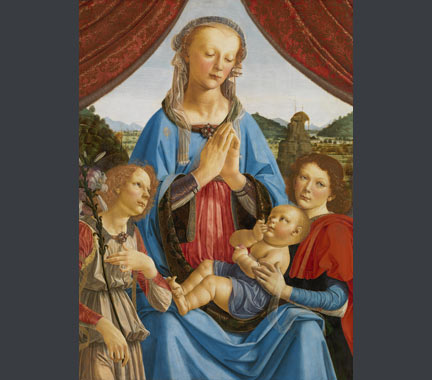
While Verrocchio’s Volterra Madonna (above) with astonishing facial detail (below) proved his painterly skills by means of the rendering of draperies and flesh tones of Madonna and Child,
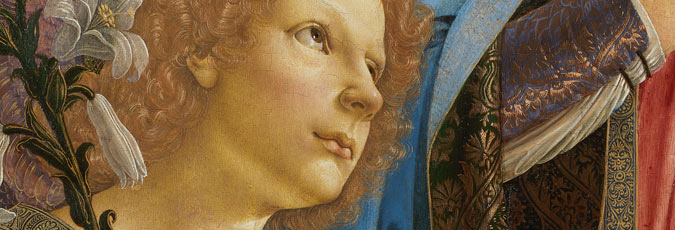
in San Domenico in nearby Pistoia, Verrocchio showed his excellence with a fresco depicting the Virgin and Child in the company of four saints with astonishing detail – notice the light off the eye above and the light off the brocaded silk embroidery). Even though only part of the original fresco survives, there is enough to show the influence of classical antiquity on the architectural framework and the inner tensions of the figures portrayed, pre-announced by the withdrawn anxiety of the Volterra Madonna. A special feature in Verrocchio’s art, both in painting and sculpture, was his design of drapery, eventually to be inherited by Leonardo. At Orsanmichele, the Incredulity of Saint Thomas was displayed in a niche from 1483. Now at the Bargello, the sculpture group had been started almost twenty years earlier and was much admired for the beauty and serenity of Christ’s face. Verrocchio would create a number of variants in clay and the image would become a highly successful template for works of art created over at least half a century. Beyond the head of Christ, however, the draped garments of the two figures attest to the effort Verrocchio made in his designs. He and Leonardo studied the effect of light on fabric and translated the knowledge gained on works of painting and sculpture.
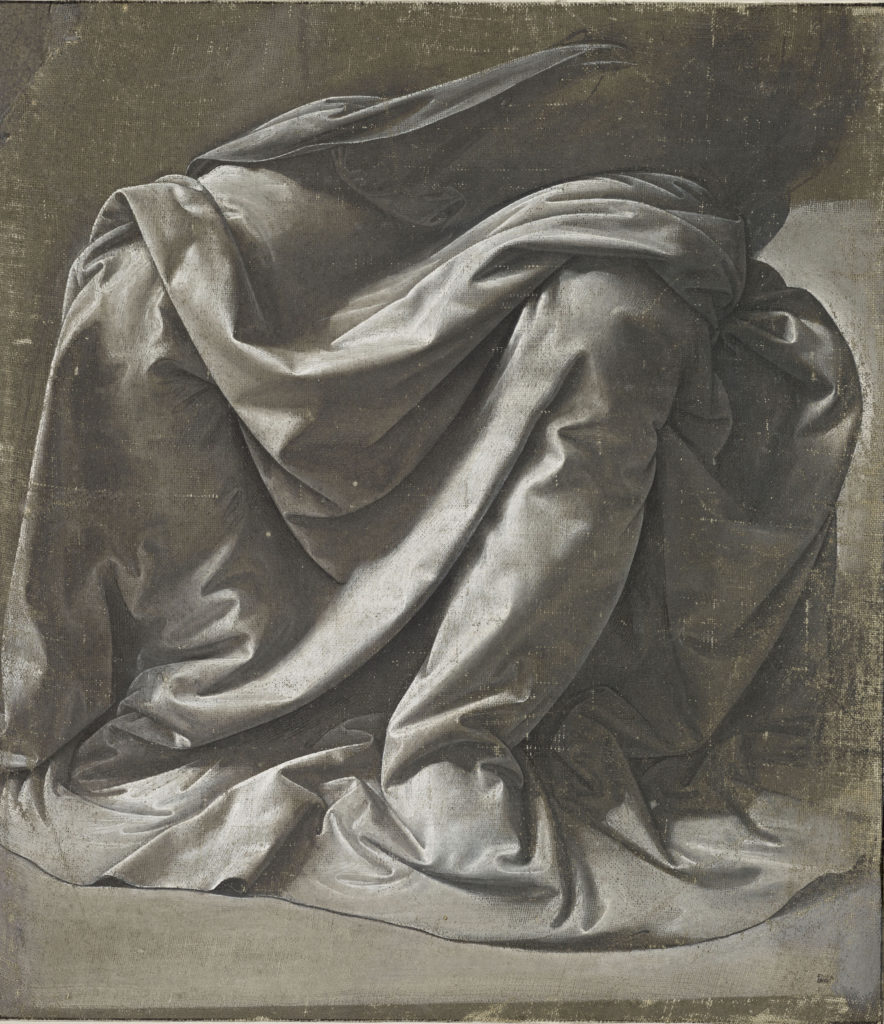
Leonardo drawings of drapery as well as of a woman’s arms and hands in connection to some of his master’s works, was thus able to create the exceptional The Virgin with the Laughing Child. Made of clay and possibly the only (surviving) work of sculpture by Leonardo it is an extremely lifelike group of the Madonna and Child.
As Verrocchio’s workshop grew, his ideas and skills were disseminated among his apprentices and disseminated over Italy. Apart from Leonardo, Perugino, Pinturicchio and Ghirlandaio benefited from their master’s exploration of nature (see his Tobias below) in connection with features from classical antiquity.
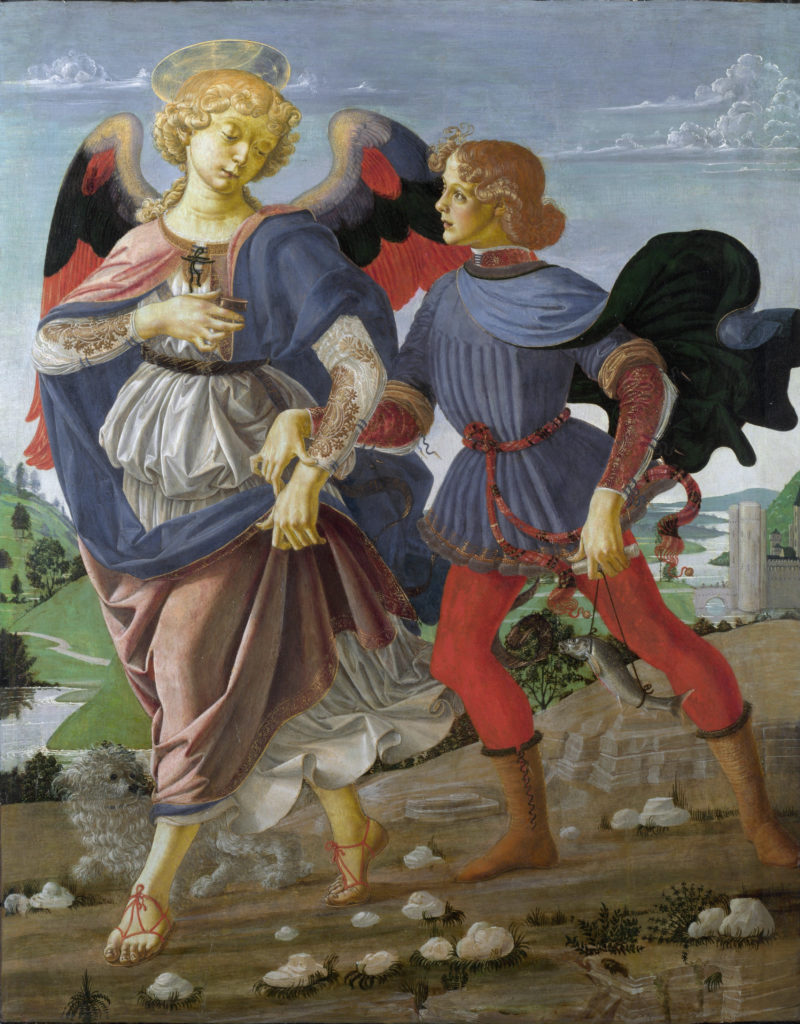
In addition, the influence of Flemish works of art – well-known in fifteenth-century Florence through works imported and owned by the Medici and other important families – with their depiction of watery landscapes and luxury fabrics, contributed to an increasing sophistication in his students’ works. Although Verrocchio continued to paint long after Leonardo’s angel in the Volterra Madonna allegedly killed his master’s taste for painting, he nonetheless concentrated on sculpture and in particular on works that emulated antiquities he had been able to study in Rome. Unlike some of his contemporaries he was not interested in copying ancient art but rather in studying and adapting particular features for his own creations. His Winged Boy with a Dolphin, formerly at the Medici villa at Careggi, but in the sixteenth century taken to the Palazzo Vecchio, is a particularly telling example for this mode of adaptation used by Verrocchio for his out-door and fountain figures as well as for the international success of the Florentine artist who in art history has long taken second place after his more famous pupils. Remains of a fountain found in Buda were once part of a prestigious export from Florence to the court of King Matthias of Hungary, crowned by fountain figures and inscribed with a couplet by Poliziano.
One of the many virtues of this exhibition at Palazzo Strozzi – apart from mundane but essential features such as enough space to look at the exhibits without endangering fellow visitors – was the opportunity to compare diverse works of art of similar content, material and author- / workmanship. Since the exhibition focused on Verrocchio as teacher, this role restored to him an authority that Vasari had long taken away and handed over to Leonardo in an attempt to prove his genius. Thus the curators, Caglioti and De Marchi, tell us the story of a successful workshop headed by a versatile and skilful artist whose pupils were not only a lasting testimony to their master’s talents and renown but would also further develop what they had learned and disseminate their knowledge across Europe. Verrochio’s art may not be easy to love (as has been pointed out in other reviews) and there is none of the hype surrounding the oeuvre of his more famous apprentices but it was in his workshop that they were trained and given the means, by which to follow and even surpass their master.
Verrocchio, Master of Leonardo
Curators: Francesco Caglioti and Andrea De Marchi
Palazzo Strozzi, Florence
9 March 2019–14 July 2019
Verrocchio: Sculptor and Painter of Renaissance Florence
National Gallery of Art in Washington, DC
West Building, Main Floor
15 September 2019 – 12 January 2020
Francesco Caglioti and Andrea De Marchi.
Verrocchio, Master of Leonardo
Venice and Florence: Marsilio Editori and Fondazione Palazzo Strozzi, 2019.